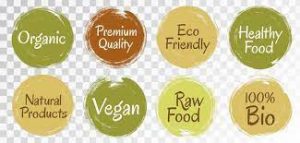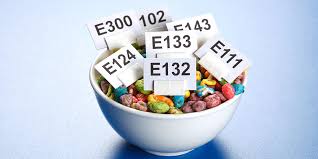
Awareness of us human beings have increased significantly over the years. We are constantly searching for meaningful practices in everything we do. One such industry has revamped tremendously due to our awareness level is the food industry. We as consumers have become more demanding. We do not wish to settle down for anything that comes our way. We are looking for healthier means to live and that means we try to consume a healthy diet as well. We want more and more products with a cleaner label meaning we need to be informed what exactly is in the food we consume, how it is made, how eco friendly is the processing and the logistics. All of this matters now. Survival has taken up a new meaning.
Industries are also keeping up to the growing demands of the consumers. They are willing to re formulate their products to fit the consumers wants. Government authorities have also undertaken many actions to regulate the flow of goods in the market. This allows the consumer to understand the nature of the products they wish to consume. It is often said Clean Label is not a new trend, it is the new way of life.
What is a Clean Label?
There is no set definition as to what a clean label is because it is a melting pot of several rising trends. Even industry giants are trying to figure out what the consumers mean by clean label. Clean label has a different meaning from consumer to consumer. The way they interpret it depends on their beliefs, wants and perceptions. So then how do we create a better understanding of this new way of life?
If a product carries a clean label, it is based on the ingredients that are used to manufacture it, the countries from where these ingredients are sourced. The list of ingredients on the back of the packaging matters a great deal nowadays. Apart from the nutritional values and claims, consumers are also focusing on the values of the companies, whether they are socially responsible, whether they have ethical practices, what is the level of transparency. Consumers demand the answers to these questions. Therefore, a clean label encompasses more than what the name explains. All natural, organic, locally grown, non GMO are some of the standards upon which a label will be classified as a clean label.
Two major factors that have brought clean labels to growing urgency are the income levels and the age of the consumers. Millennials are driving the growth of clean label practices. They have high income levels, information at their fingertips to compare products and then review them for the world to see. Consumers need to soak in this information to stay ahead of the game and connect with the consumers to provide them what they want. THye have to tailor their marketing strategies, formulations and product innovations based on the real time feedback they avail from the users. Access to this information was never present in olden days.
Five steps for a Clean Label product:
- The list of ingredients should not be long.
- Artificial ingredients should be replaced by natural ones and be clearly mentioned on the packaging.
- An increase in the nutritional value of the product.
- Packaging should be clear and transparent.
- The brand must incorporate sustainable practices while innovation, manufacturing and logistics.
Consumers view products with shortened ingredients lists as cleaner. It is difficult for industries to catch on to that as reducing the ingredients should not have an impact on the taste or the nutritional value. Shelf life will reduce if the number of ingredients are reduced. Thus it becomes a small hurdle to formulate this practice on a large scale. Brands need to create a persona of their customer who is looking for a clean label and try to get a better understanding of what they mean by it. They need to meet the consumers expectations and learn to communicate with them as what they are eating.
The use of artificial ingredients have reduced over the years. There are several ingredients out in nature that give the color for the visual appeal and also improve the nutritional value. Turmeric, beets, and Spirulina offer many such benefits.
Packaging plays a vital role in the Clean label movement. Consumers are more likely to buy a product which has the non GMO stamp, organic or all natural emphasized on the packaging. It provides them a sense of assurance about the food they choose to include as part of their diet.
Now for the most important factor of being a clean label. Sustainability. Clean label goes further than ingredients and the packaging. It is the role of the brand in society, how they contribute to the well being of the environment we live in. Corporate responsibility and sustainability matters when consumers assess the products laid out to them. It starts from sourcing the ingredients and ends at logistics. Factors like environmental pollution, animal welfare are all taken into consideration.
As of now, this is what we know about Clean Label. Chances are it will become the only practice with which the food industry shall function on. Apart from the food industry, Clean Label has also affected the cosmetic industry also. People need to know what they put on their skin also.

